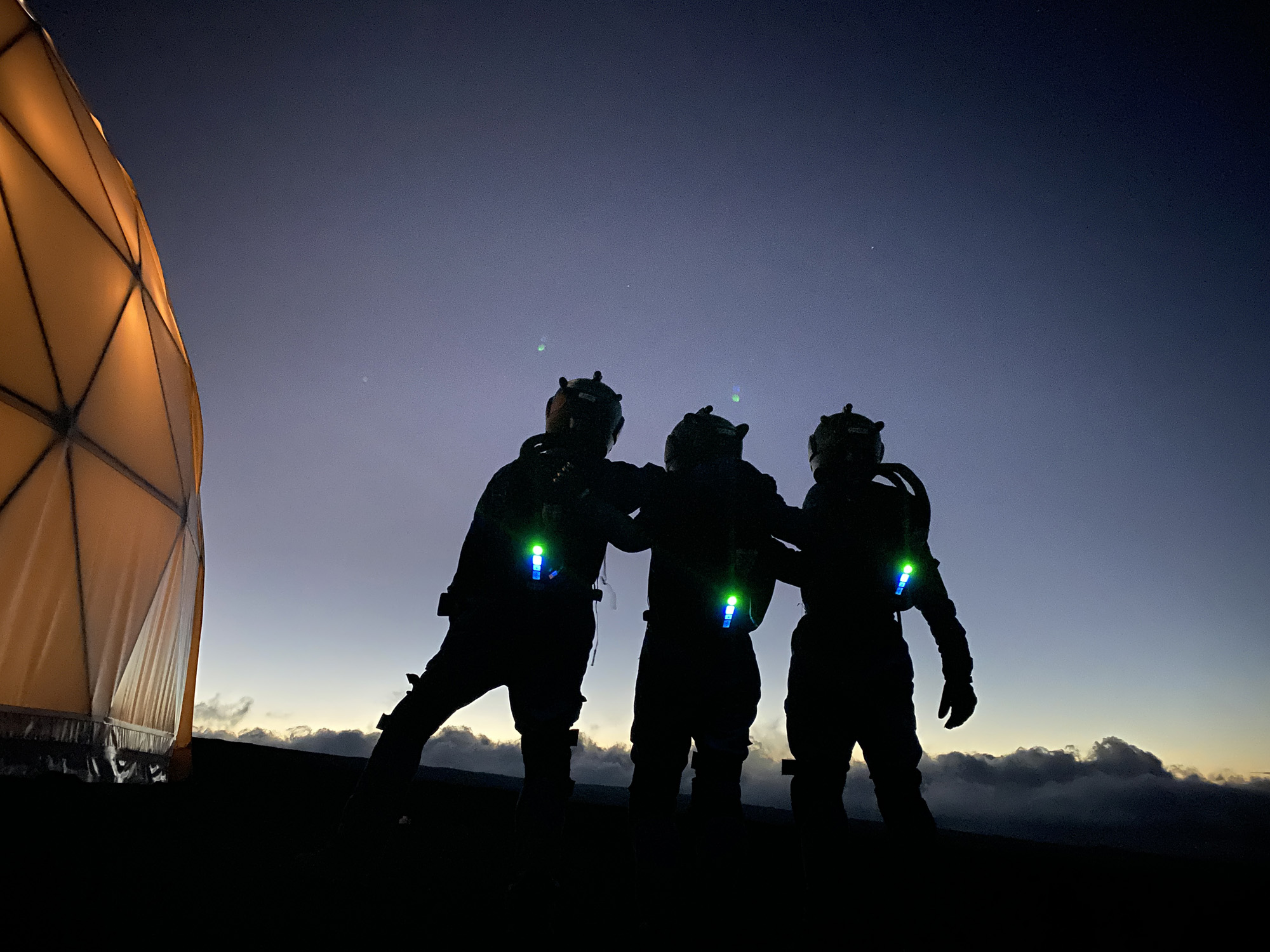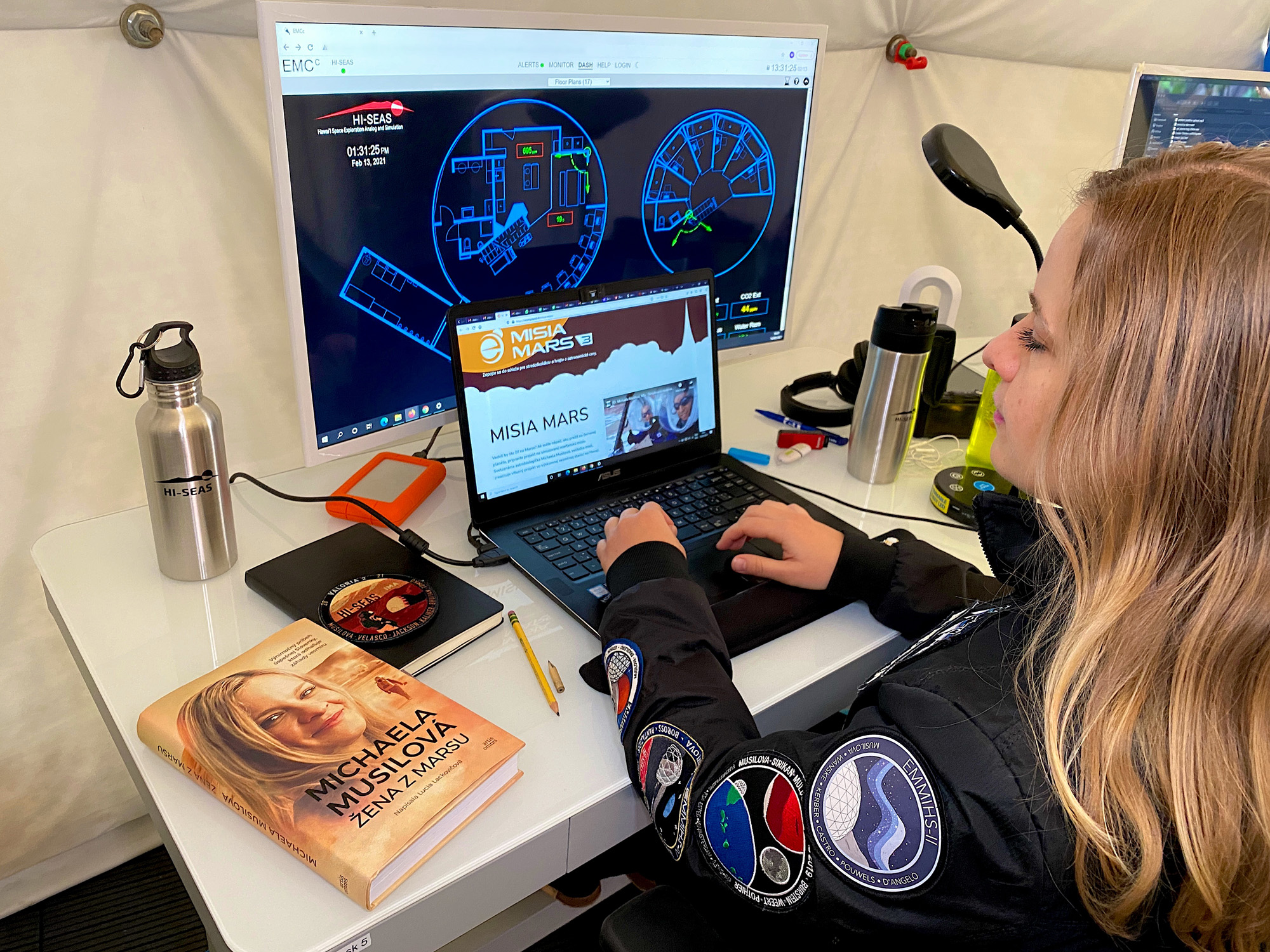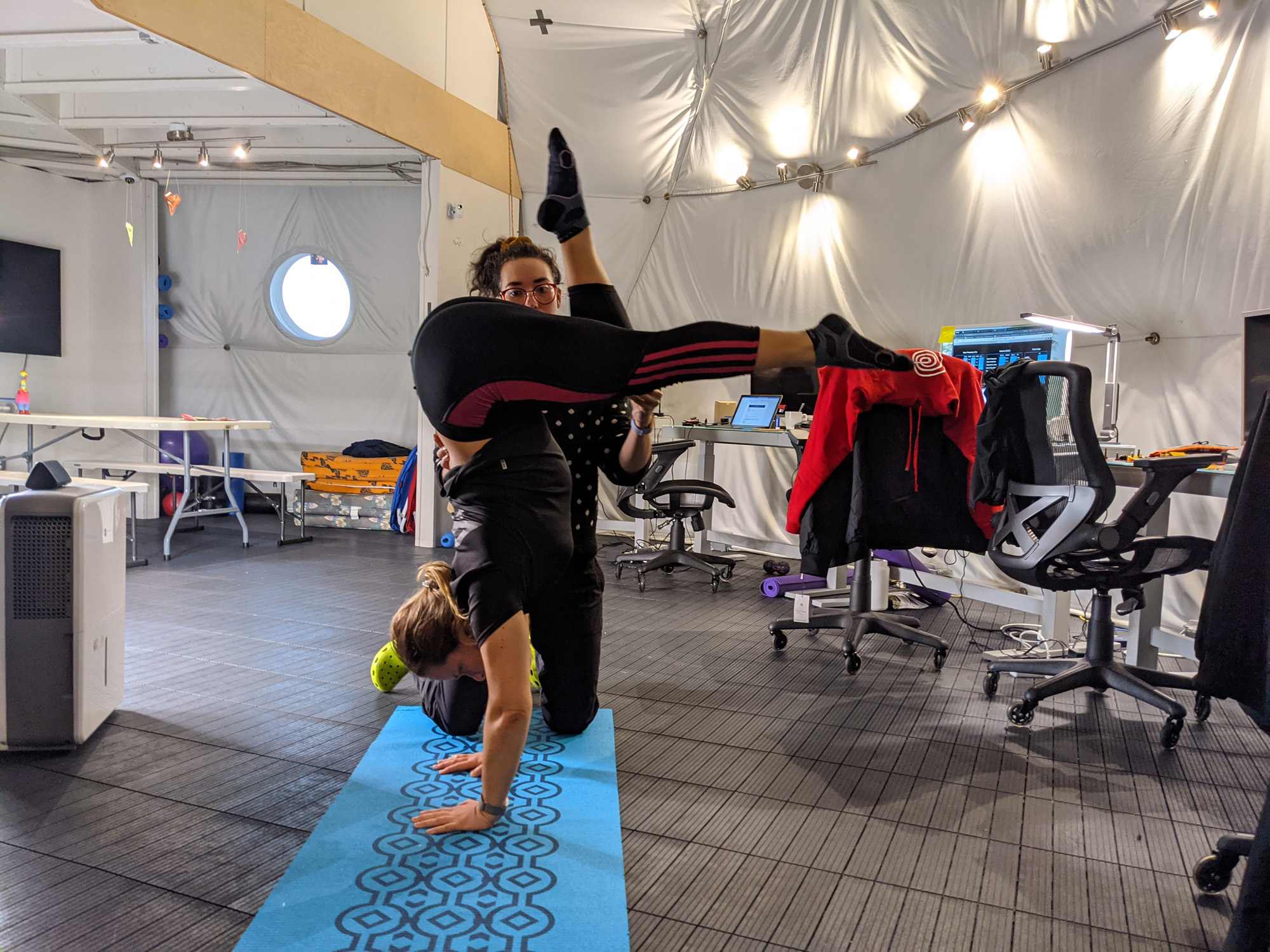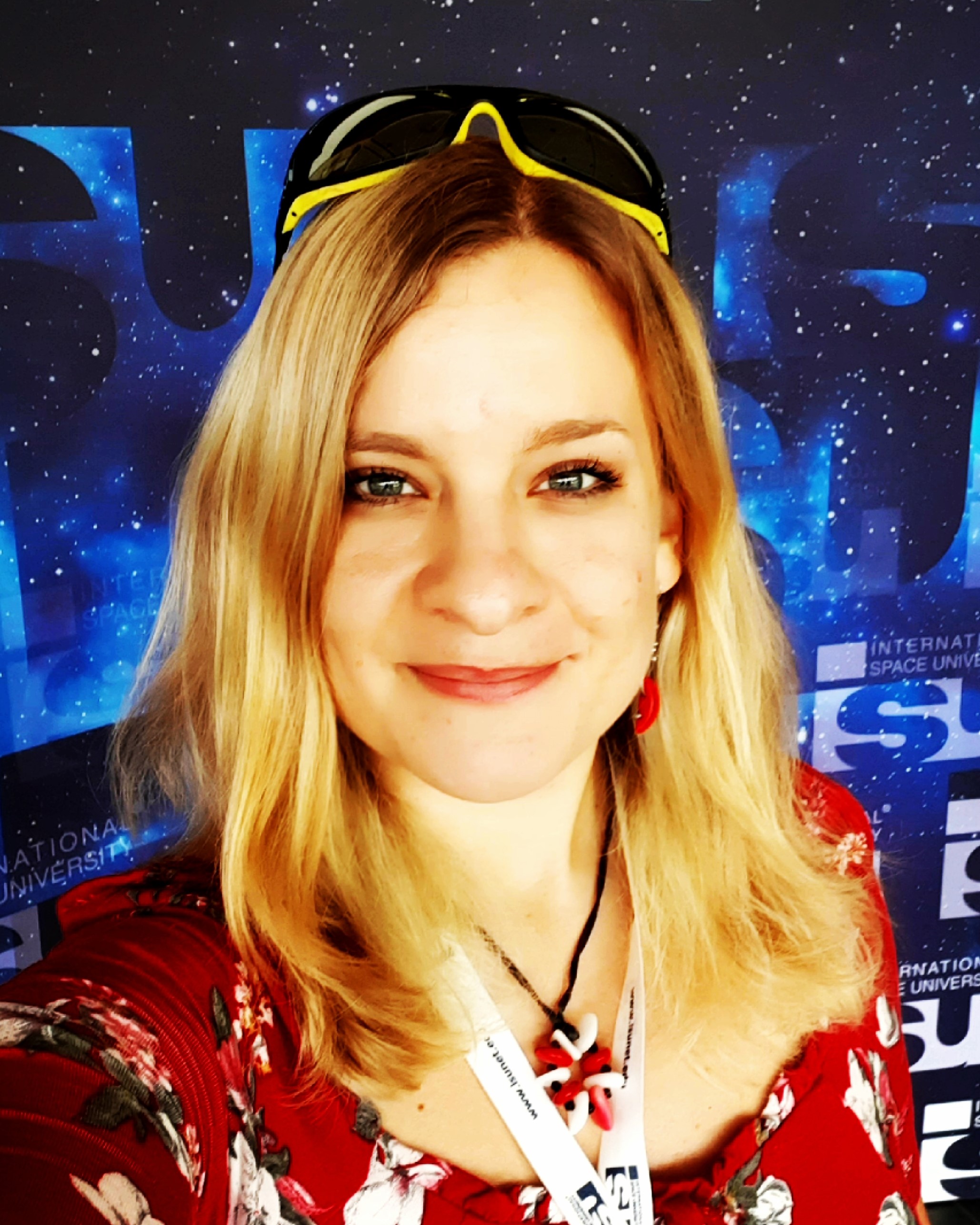The importance of love language on Mars — Commander's report: sol 14
The Valoria 2 crew chose to understand each other's love languages to bond better during an analog mission on Mars.

Dr. Michaela Musilova is the director of Hawaii Space Exploration Analog and Simulation (HI-SEAS) program, which conducts analog missions to the moon and Mars for scientific research at a habitat on the volcano Mauna Loa. Currently, she is in command of the two-week Valoria 2 mission and contributed this report to Space.com's Expert Voices: Op-Ed & Insights.
Commander's report for the Valoria 2 Mars mission at HI-SEAS
Sol 14 (Feb. 17, 2021)
It's our last night on Mars and I can't help myself from feeling sad, again. Yet another great mission is coming to a close. I'm already dreading the goodbyes that will start tomorrow night and I can't help myself from missing my crewmembers, even though they're still right next to me. It is with great effort that I'm trying to focus on the last tasks and research projects that I need to attend to before we'll be leaving the simulated martian station tomorrow.
We started the mission with an inside joke that we're spending 90% of our time together laughing and I can't say that that was an exaggeration. The crew was able to find fun moments and a positive side to most things, under all circumstances. Every activity that we did, whether it was performing a research project or something mundane like cleaning the habitat, we always ended up having a good time. I hope that their laughter will continue to echo throughout the HI-SEAS habitat, even long after they'll be gone.
My crew's cheerfulness and endless jokes ended up being vital for me, as I had to face several difficult personal challenges unrelated to our mission. No matter how sad I felt, all I needed was to spend a few minutes with my martian family and I found my optimism again. I am very grateful to them for this moral support that they may not even be aware of having given me. Future space missions will truly depend on how well the crews will get along and be able to support one another.
Related: The Valoria 2 crew turns to the 'dark side,' changing HI-SEAS into Horror-SEAS
Get the Space.com Newsletter
Breaking space news, the latest updates on rocket launches, skywatching events and more!

Valentine's Day on analog Mars was a great example of how the Valoria 2 crew was able to work together to create a very welcoming and caring atmosphere in our habitat. To start, we requested help from our Mission Support volunteers. At HI-SEAS, we're very grateful to have a number of volunteers all around the world that help the crew while they are on mission. Mission Support members act essentially as the crew's "Google" search engine, since the crew has a very restricted access to the internet.
My crewmembers' request that day was for Mission Support to send us the "love language" test. Once we took the test, we could better understand how we express our friendship and our needs towards one another. Taking the test together was also very insightful for each crewmember, since most of us were at least partially surprised by the results of the test. I was also very pleased with how comfortable we all are sharing such information between all members of the crew.
The huge feast, by simulated martian standards, was a perfect reflection of our individual love languages. Some crewmembers cooked a delicious meal and baked cupcakes and garlic knots (a crew favorite started by the Sensoria M3 crew). Others spent time embellishing the habitat with origami hearts and other original decorations. The crewmembers that were less crafty and not as skilled in the culinary arts contributed by cleaning up after the party. We also had a very pleasant and deep conversation about very personal topics, which brought us even closer together.

Before we wrapped everything up this evening, we had one last session with Science Communications Officer Lain Velasco. Her study on proprioception and body awareness has been surprising in many ways. The crew advanced quicker than expected and they familiarized themselves with being upside down in only two weeks. They also reported feeling more confident and in control when doing exercises they deemed impossible at the start of the mission.
Lain not only got the data she needed, but she is genuinely proud of how hardworking the Valoria 2 crew has been. She feels humbled the crewmembers trusted her enough to keep them safe throughout the mission. Post-mission, Lain is looking forward to checking in with the crew as they continue their training programs independently.
Operations Officer Rilee Kaliher was very happy to complete her in situ research utilization research project during our mission. She conducted multiple tests on a variety of lava rock samples, which included studying their textures, hardness, load strength and other geological characteristics. Rilee conducted some of the tests with instruments that she built at HI-SEAS and they worked to her satisfaction. She is now looking into applying her new knowledge to future research projects related to Mars.

The project that got the whole crew talking and competing every day was Crew Engineer Chris Jackson testing the Amazon Halo equipment on us. Chris observed that seemingly inaccurate readings of the devices have the potential to discourage the entire crew from reviewing data from their own devices on a regular basis. However, under certain conditions, the device's readings can support healthy competitions between crewmembers. While becoming more aware of their tone of voice, sleep patterns and physical activity, the crew had not drastically changed their behavior based on the device's readings. Overall, Chris reported that even though the crew liked learning more about themselves, they were also comfortable being themselves.
Plant Biology Officer Paul Tomko dedicated most of the mission to his food related projects and an unplanned documentary that the crew ended up creating. Paul was able to provide the crew with two harvests of lettuce and mixed sprouts, along with one legume mix harvest to boost the crew's nutritional needs. The Valoria 2 mission documentary initially started as a spoof of some aspects of living at HI-SEAS during analog missions (the so-called "Horror-seas" Easter egg video I mentioned in my third report for this mission). Even though the movie ended up being rather dark, its content is meant to help future crews learn how to manage surviving at HI-SEAS better.

As for me, I was happy that I was able to find some time to work on my collaborative project with NASA Goddard that focuses on understanding how life survives in lava caves on Earth. This is particularly relevant these days with the hope of finding biosignatures on Mars (signs of past or existing life on Mars) with a number of upcoming martian missions. The whole crew is looking forward to hearing news about the Mars 2020 mission, whose Perseverance rover and helicopter Ingenuity are meant to land on Mars tomorrow.
Tomorrow is also going to be the day that I'll also be launching a competition for high school students called Mission to Mars in Slovakia, in collaboration with the company Slovenske Elektrarne. I will perform the experiment of the winning team during an analog space mission at HI-SEAS later this year. I'm really looking forward to what exciting and new space relevant experiments students will come up with.
Commander Musilova signing off feeling sad and hopeful at the same time. I will miss the Valoria 2 crew very much, but I'm certain that we'll keep in touch and meet again somewhere on Earth in the near future. Until then, I have a lunar Selene III mission to look forward to in a few days' time.
Follow Michaela Musilova on Twitter @astro_Michaela. Follow us on Twitter @Spacedotcom and on Facebook.
Join our Space Forums to keep talking space on the latest missions, night sky and more! And if you have a news tip, correction or comment, let us know at: community@space.com.

Dr. Michaela Musilova is an astrobiologist with a focus on life in extreme environments. She has a PhD degree from the University of Bristol and is a graduate from the International Space University's (ISU) Space Studies Program. Michaela's space research experience includes working at the NASA Jet Propulsion Laboratory, University of London Observatory, Canada-France-Hawaii Telescope, on NASA's and the U.K. Space Agency's MoonLite project, being an analogue astronaut and Commander of numerous simulated missions to the moon and Mars at the HI-SEAS station in Hawaii, and at the Mars Desert Research Station in Utah. Michaela is currently the Director of HI-SEAS, as part of the International MoonBase Alliance. She is also a visiting Professor at the Slovak University of Technology, Vice-Chair of the Slovak Organisation for Space Activities, Adjunct Faculty at ISU and the Senior Research Adviser for Mission Control Space Services Inc.
She has received numerous prizes and grants, including the Emerging Space Leaders Grant from the International Astronautical Federation (2016) and the Women in Aerospace – Europe Young Professional Award (2016), and she was selected as one of the most promising 30 under 30 by Forbes Slovakia (2015). Michaela is also actively involved in the Duke of Edinburgh's International Award, as a patron of the program in Slovakia and an Emerging Leader Representative for Europe, Mediterranean and Arab states. Furthermore, she enjoys participating in STEAM outreach activities from teaching at schools, giving public presentations, to working with the media and more, as well as encouraging people to pursue their dreams. For instance, she is an Advisory Board Member of the STEM Punks immersive programs for students and teachers.









